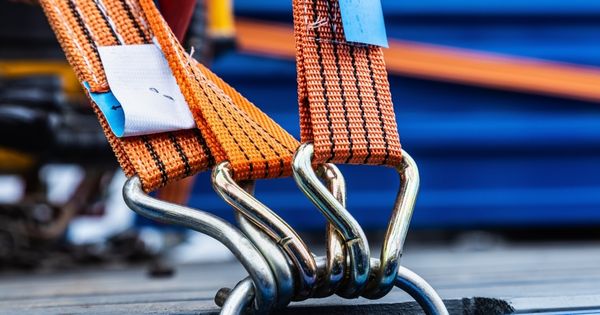Mistakes To Avoid When Securing Items in Your Truck

Poorly securing items in your truck could lead to accidents while out on the road. Do not make this mistake and put other drivers and yourself at risk. If you’re a truck owner, avoid these errors and prioritize safety when traveling with a load in your pickup.
Ignoring or Failing To Learn the Load Capacity
Do you understand how much weight the back of your truck can carry? Failing to know this could put you at risk of damaging the vehicle’s shocks and suspension, along with the chance of blowing out a tire. Typically, trucks have a sticker on the inside driver’s side door with a Gross Vehicle Weight Rating (GVWR)—do not ignore this information!
Placing Heavier Items in the Back
Placing heavier, bulkier items in the back of the truck bed will result in poor vehicle handling. Steering will become difficult, and you could lose control of the car because the weight is not distributed evenly. Heavier items should be in the front of the truck bed, and lighter items should be in the back.
Securing Loads With the Wrong Restraints
Using any old rope from your garage may be tempting, but do not do this. An old rope that has seen grease, dirt, and sunlight for many years becomes brittle, which could negatively impact your load securement. Use quality bungee cords and ratchet straps for the best restraints—use weld-on tie-down points to anchor these restraints to the truck so that the load doesn’t move or shift while you’re transporting items.
Using the Wrong Cargo Net or Tarpaulin
Are the items you are securing to your truck lighter in weight? You may need to use a cargo net or tarpaulin to prevent objects from flying out the back of the truck and onto the freeway. Do not mistakenly purchase the wrong size net; ensure these types of restraints are the same size as your truck bed to guarantee items won’t shift.
Failure To Place a Warning Flag on Oversized Loads
If any portion of your load is sticking out the back or sides of the truck bed, you must place a warning flag in a place that is visible to other drivers. This law may vary from state to state, but it is a good habit to get into regardless. This action provides other drivers on the road a clear indicator that your load is oversized and alerts them that they may need to keep a greater distance from your vehicle.
Do not ignore proper protocol when securing large and heavy loads onto your truck. You never want to put your life or that of others at risk of injury or accident. Double-check your restraints and loading technique before hitting the road to ensure safety.

